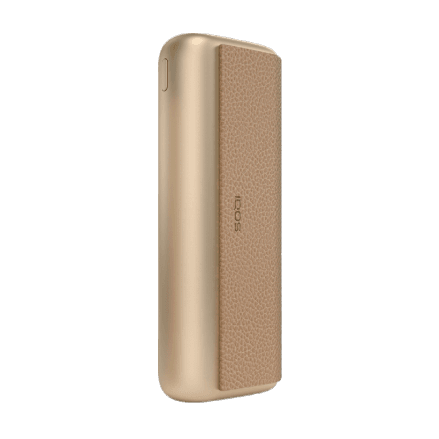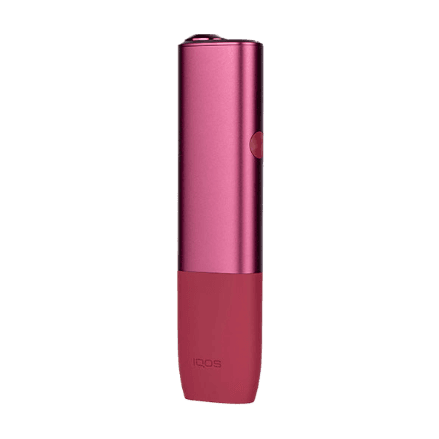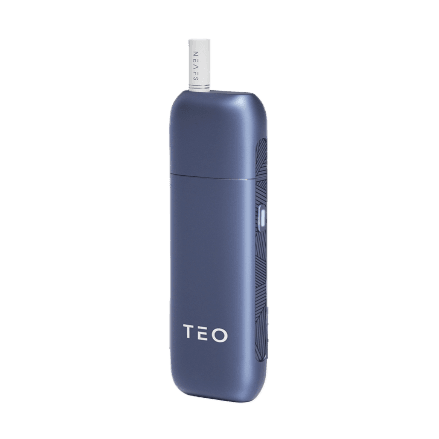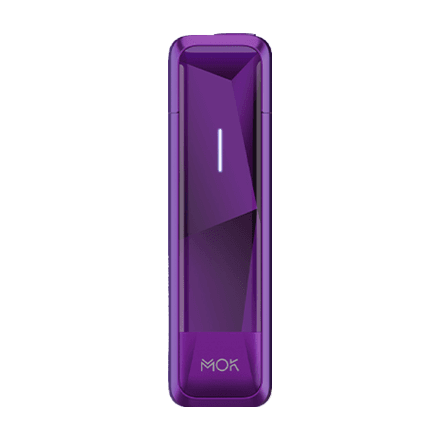
Vapes and nicotine pouches may have helped millions of people quit smoking, but they’re not the perfect solution for everyone. Some require a more familiar experience: the taste and aroma of real tobacco, the distinct feel of a paper filter, and predetermined session times. That’s where heated tobacco products come in, as they can closely mimic smoking with combustion-free technology.
This list covers some of the best heat-not-burn products on the market, from affordable, entry-level options to advanced setups. Whether you’re looking for your first device or an upgrade, we’ve got you covered.
Note: Heated tobacco products are available in most countries, but are difficult to find in the United States, where the FDA has only authorized older generations of the IQOS system and one Logic device. IQOS is expected to launch nationally when the FDA grants marketing permission for its new ILUMA device.
What are heated tobacco products?
Heated tobacco products (HTPs) are battery-powered devices that heat tobacco to precise temperatures below its combustion point. This method—which is also sometimes called “heat-not-burn” (HNB)—eliminates the harmful smoke produced by traditional cigarettes and replaces it with a tobacco-infused vapor. The proprietary tobacco sticks used in HTPs usually include a mixture of real tobacco, vegetable glycerin (increases the visible vapor), and a binding agent (such as guar gum).
The devices come in two different formats. Products like the IQOS ILUMA have a two-piece design: a slim “holder” (the heating component and a small internal battery) paired with a “pocket charger” to charge the holder between uses. Many other devices, such as the ILUMA ONE, utilize an all-in-one design, where the holder and charger are integrated into a single unit.
Although functionality varies, using a heat-not-burn device is usually straightforward. Simply insert a tobacco stick into the chamber, allow it to warm up (commonly 15-25 seconds), and then inhale. The process closely mirrors cigarette smoking, as users can enjoy real tobacco in a cigarette-style format and receive comparable levels of nicotine. Also, the experience is constrained by a predetermined session time, which most smokers are accustomed to. After the time has expired, most devices automatically turn off.
Similarities aside, users will likely notice a difference in flavor. Because HTPs do not burn tobacco, certain dominant flavor notes from cigarettes (such as smoke and ash) are mostly absent. The result is a purer representation of the tobacco, which some users need time to get used to.
Is heated tobacco safer than cigarettes?
Most of the health risks associated with conventional cigarettes are the result of the combustion process. When cigarettes are burned, they release thousands of chemicals, such as carbon monoxide, formaldehyde, and hydrogen cyanide. Hundreds of these chemicals are known to be harmful, and around 60-70 of them (if not more) are known carcinogens.
Combustion does not occur in heated tobacco products, thus many of the toxicants associated with cigarette smoking are absent. A 2022 Cochrane review found moderate‐certainty evidence that HTPs expose users to fewer carcinogens and toxicants than cigarettes. Some studies have also indicated that switching from cigarettes to HTPsmay improve several biomarkers of potential harm.
The impact of combustible cigarettes on mucociliary clearance (MCC) is another area of concern. Mucus and cilia work in tandem to remove pathogens and debris from the airways. Cigarette smoke damages cilia and impairs mucus function, leading to a host of respiratory issues. However, cilia damage may be reversible for those who abstain from combustion. A study of former smokers who exclusively switched to combustion-free nicotine products (HTPs or vapes) revealed that their MCC was similar to that of former and never smokers.
It is also worth noting that IQOS was granted a modified risk designation by FDA in 2020. Modified-risk tobacco products (MRTPs) are expected to benefit public health by reducing exposure to harmful substances. However, while HTPs may be recognized as less harmful than cigarettes, they shouldn’t be considered “harmless.” The use of any tobacco product is always associated with a degree of risk.
Can heat-not-burn products help me quit smoking?
Although heated tobacco products are not an approved form of nicotine replacement therapy (NRT), many see them as a valuable tool for smoking cessation. Nicotine patches, gums, and lozenges may work for some, but their dissimilarity to cigarettes is often a stumbling block. HTPs, on the other hand, unapologetically embrace the smoking experience (in a combustion-free format), which may promote a smoother transition.
Regardless of their potential, there is limited data on the efficacy of HTPs for smoking cessation. One Altria-funded study found a significant decrease in cigarette consumption in adults who began using HTPs. They also reported an increased likelihood of smoking cessation from HTP (and e-cigarette) users. While other studies have echoed these claims, most were funded by tobacco companies, leading some to challenge their reliability. Ultimately, more research is needed to determine the impact of HTPs on smoking prevalence.
We can, however, gain some insight from real-world examples. The rollout of HTPs in Japan in 2016 corresponds to a sharp decline in cigarette sales. Note that the sale of nicotine e-liquid is illegal in Japan, which has drastically limited the availability of less-harmful smoking alternatives. This may partially explain why HTPs have been so widely embraced.
While the actual statistics may be lacking, HTPs have undoubtedly helped many people quit smoking. If NRTs, vapes, snus, and nicotine pouches are inadequate or unappealing, heat-not-burn products may provide a useful off-ramp from combustible cigarettes. Everyone is different, which is why tobacco harm reduction products exist on a spectrum.
Differences between IQOS HEETS and TEREA sticks
IQOS manufactures two styles of tobacco sticks: HEETS and TEREA. While they look similar, they rely on completely different heating mechanisms and cannot be used interchangeably.
HEETS (also known as “HeatSticks”): HEETS are the original IQOS cigarettes. They utilize a heating system in which a ceramic sensor blade (built into the device) punctures the stick and heats it from the inside. HEETS were produced for the first three generations of IQOS devices (this includes everything except for the newer ILUMA series). Many IQOS alternatives use similar heating technology, so cross-compatibility with other devices may be possible, although we cannot confirm this.
TEREA: TEREA sticks are a newer innovation, designed for the ILUMA series (fourth generation IQOS devices). Rather than a blade system, TEREAs rely on electromagnetic induction heating. A stainless steel plate is integrated into every stick, which heats up when inserted into the device. This advanced technology (named the “SMARTCORE INDUCTION SYSTEM”) reduces maintenance, promotes improved heat dissipation, and enhances the flavor. It also eliminates concerns about breaking the fragile ceramic blades found in earlier devices.
Can I use cigarettes in heated tobacco devices?
Heated tobacco sticks may closely resemble short cigarettes, but their construction is much different. Cigarettes are designed to be burned, whereas tobacco sticks are designed to be heated. Thus, traditional cigarettes are not compatible with heat-not-burn devices. Let’s explore why.
Although real tobacco is used in both products, it is processed much differently. Cigarettes contain dried, fine-cut tobacco packed into a paper tube—that’s pretty much it. On the other hand, the tobacco in most HNB sticks is finely ground, mixed with vegetable glycerin and binding agents, pressed into sheets, cut into strips, and dried.
There are a couple of reasons for this extensive process. First, vegetable glycerin is a crucial ingredient, as it is largely responsible for producing the visible vapor (it also prevents the tobacco from overheating). Second, the tobacco strips are arranged vertically in the stick, which allows the blade mechanism (in some devices) to slip between them.
Tobacco sticks may differ from traditional cigarettes in other ways as well:
- Some (not all) HNB sticks have aluminum foil liners to help maintain temperature and prevent the paper from combusting.
- Heating components are sometimes integrated into the stick. IQOS TEREA sticks, for example, contain stainless steel plates, which are necessary for the device to function.
- They often contain several other unique components, such as cooling plugs, seals, protective wraps, specially designed filters, and airflow chambers.
Ultimately, the complex design and manufacturing process of tobacco sticks is necessary for their performance in HNB devices; cigarettes cannot be substituted.
Choosing the right heated tobacco device
Those new to the heat-not-burn tobacco scene may be overwhelmed by the number of options on the market. IQOS may be the most established brand, but many serviceable (often more affordable) IQOS alternatives are also available. Here are a few things to consider before purchasing your first device:
- Tobacco stick availability: many brands of tobacco sticks are only sold in specific regions. Before purchasing a kit, make sure the compatible sticks are readily available.
- Uses per charge/battery size: most HNB devices deliver around 20 uses per charge, but smaller devices may offer considerably less. The charge times also vary, with some devices requiring over 90 minutes. Those with limited access to chargers throughout the day should select a device that accommodates their daily consumption.
- Device size: some devices fit comfortably in the pocket, while others are more suited for handbags and backpacks. If portability is an important factor, review the dimensions before purchasing.
- Maintenance: devices with blade heating should be cleaned daily, which may be inconvenient for some. In contrast, devices that utilize induction heating usually do not require regular cleaning.
- Tobacco-free options: If you’d like to eliminate tobacco or nicotine from the experience, there are a few options available (and more coming). For example, the NEAFS TEO offers tobacco-free, nicotine-free, and even CBD sticks.
The Freemax REXA PRO and REXA SMART are highly advanced pod vapes, offering seemingly endless features, beautiful touchscreens, and new DUOMAX pods.
The OXVA XLIM Pro 2 DNA is powered by a custom-made Evolv DNA chipset, offering a Replay function and dry hit protection. Read our review to find out more.
The SKE Bar is a 2 mL replaceable pod vape with a 500 mAh battery, a 1.2-ohm mesh coil, and 35 flavors to choose from in 2% nicotine.
Because of declining cigarette sales, state governments in the U.S. and countries around the world are looking to vapor products as a new source of tax revenue.
The legal age to buy e-cigarettes and other vaping products varies around the world. The United States recently changed the legal minimum sales age to 21.
A list of vaping product flavor bans and online sales bans in the United States, and sales and possession bans in other countries.
Find Your Perfect Product
Navigate our vape database precisely by customizing your filters. Find products tailored to your needs with options like price, category, and more.
Sort by:
Empowering Vapers Worldwide
As a recognized authority in the vaping world, Vaping360 draws over a million monthly visitors to read our in-depth reviews and guides, breaking news, and insights on the latest vaping products and events impacting the vaping world. Our mission is to achieve a healthier, smoke-free world.














